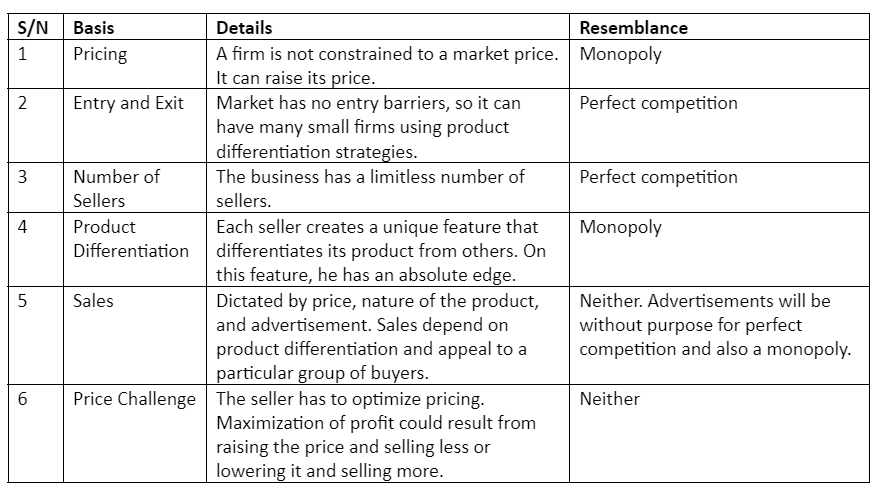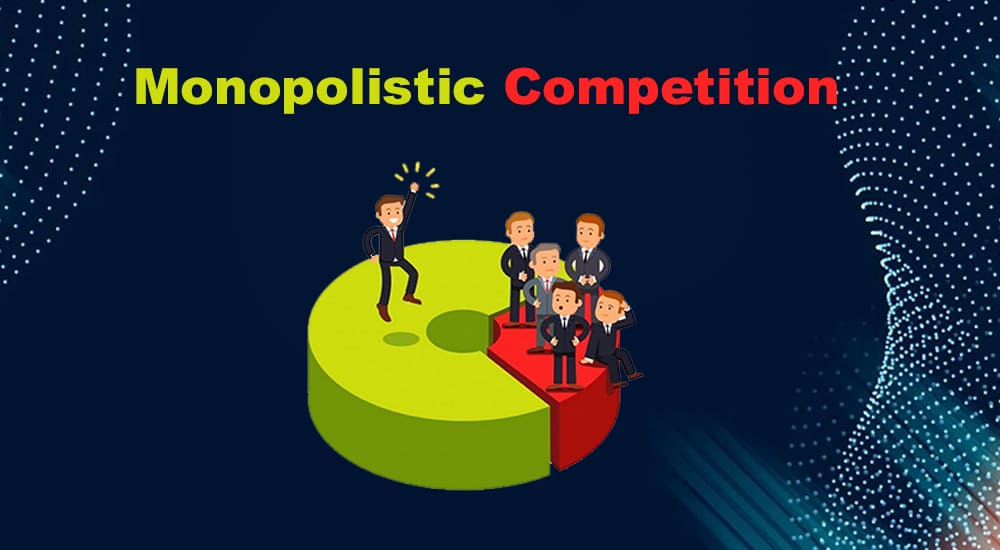A market is comprised of sellers, buyers, forces of demand and supply, as well as external and internal elements that have an effect on the company. The market encompasses more than just a single item or service.
The buyers and the sellers are two important stakeholders in this scenario.
A market structure explains the dynamics between buyers and sellers. Most proponents, including Adam Smith, advocated the free market concept, in which demand and supply decide both the price and quantity of goods.
Market structures can be completely competitive when there is a perfect system of buyers and sellers, such as in monopolistic markets (where there is one seller and many buyers), duopolistic markets (where there are two sellers and many buyers), or oligopolistic markets (where there are three or more sellers and many buyers). The buyer and the seller comprise the market’s most important relationship.
This article will discuss monopolistic competition, which refers to a market with multiple buyers and sellers. A seller that offers a product that is only marginally distinct from their competitors will have a competitive advantage in the market. It is essential to remember that certain types of market arrangements, such as perfect competition, are more appropriate in principle than in practice.
Following an overview of the many forms of market systems, we will go into monopolistic competition in depth.
Perfect Competition
There are many buyers and sellers of goods and services in a market with perfect competition. Because even the smallest differences can significantly impact the cost, the items have been standardized to ensure consistency. In a fundamental sense, the players do not influence the prices of the commodities. This structure does not exist in reality because both the sellers and the products cannot be identical in every way.
To unify all players, the sellers must possess the same personality, reputation, location advantage, shop tone, etc. Summarily, it is a theoretical condition.
Monopoly
Here, the market has one seller and many buyers. It indicates that the seller can manage both the supply and, consequently, the price. The price is not determined by the market forces of demand and supply but rather by the seller. Certain monopolies occur naturally, while others, particularly those imposed by the government, are artificially created. Natural ones are associated with a high capital cost, making it difficult for new competitors to enter the market and compete successfully.
One example is the market for utility (electricity) providers. Regarding certain high-tech products, such as Google and Facebook, the first-mover advantage has elevated certain corporations to the monopoly pedestal. They have a sizable market, making it challenging for new competitors to break in. This market is subject to extensive government regulation to safeguard consumers.
Duopoly
The duopoly market is characterized by having two sellers and many buyers. Both sellers have to maintain their total autonomy. If they go into business together, they will have a monopoly. The actions of individual sellers have the most direct impact on price strategy, not those of competitors.
Oligopoly
This market has not had many sellers. The market competition level is quite low, and there are many prospects for cooperation. The decision of one firm influences others. They control the pricing and can form a coalition to manage the forces of demand and supply.
Monopolistic Competition
This occurs when each seller offers nearly identical things yet contains minor differences. Every seller has a monopoly on the market to sell their somewhat unique commodity. Because he also faces competition from businesses that offer more or less adequate substitutes, the concept of monopolistic competition is appropriate here.
It is a dynamic process involving the interaction of product differentiation, monopolistic pressures, and competitive forces.
First, let’s look at the product differentiation.
Product Differentiation
Product differentiation is the basis for selecting one product over another. The differentiation may be real or fancied, but it influences a buyer’s decision. This makes the competition impure.
Some components of product differentiation are:
- Patents, trademarks, and trade names.
- Packaging
- Design/color style
- Sales condition
- The convenience of seller’s location
- Customer service/courtesy
- Efficiency
- Reputation.
Considering these factors, it can be assumed virtually all products are slightly differentiated.
Two theories are working here: monopolistic and competitive.
For instance, in retail establishments, the distinctiveness of the establishment in which a product is sold, such as the location, atmosphere, trademarks, looks, and feel of the establishment, contributes to the product’s uniqueness. This demonstrates its monopolistic nature.
Its competitive nature stems from the fact that it faces competition from other retail establishments that sell things that are comparable to its own but do so under different conditions.
The same thinking should be used for copyrights. Despite the fact that those who control the copyright have monopolized the product, it is nevertheless susceptible to competition across a wider field. Maximizing one’s own profit is the driving force behind the entire market structure.

Features of Monopolistic Competition

Theory of Value
In monopolistic competition, the market has a group of competing monopolists considered as competitors.
Three variables have a key role in this market:
- Price
- Product Quality
- Advertisement
According to the monopolistic competition value theory, the value of a product is determined by three factors: product price, product quality, and advertisement. The seller has to work on advertisements and improve product quality.
Since a lower price will result in a reduced profit, he can decide against lowering the price. He must direct the purchaser’s attention to aspects like quality, service, brand, advertisement, location, etc. These distinguish the product and can be utilized to increase the customer’s value for the money they spend.
The selling costs include the costs of advertising, salesman salaries, sales department expenses, margin offered to merchants to boost efforts in favor of a certain product, window displays, demonstrations, and other similar activities.
Summary
The concept of monopolistic competition is a hybridization of monopoly and the concept of competition. The differentiation of products creates monopolies for each product. On the other hand, the availability of products that are comparable in the market creates rivalry, and the seller has the variables of price, advertisement, and the nature of the product to iterate to achieve the objective of maximizing profit.
